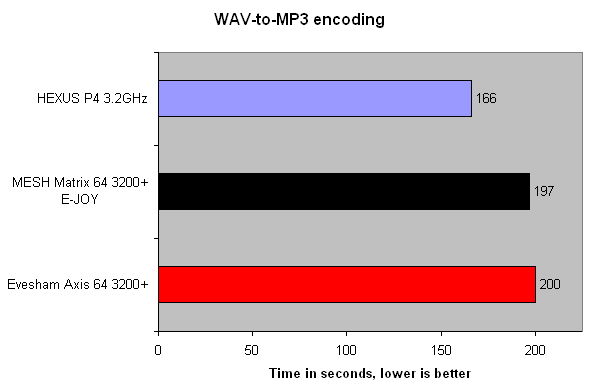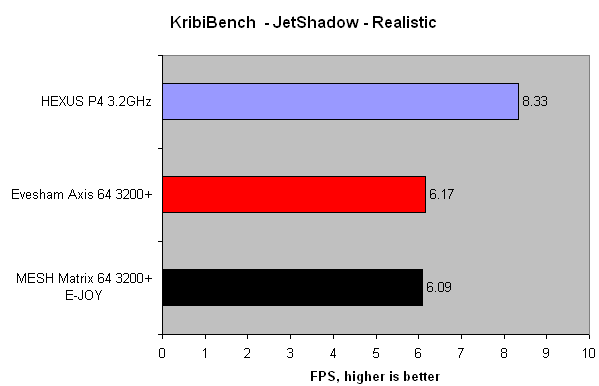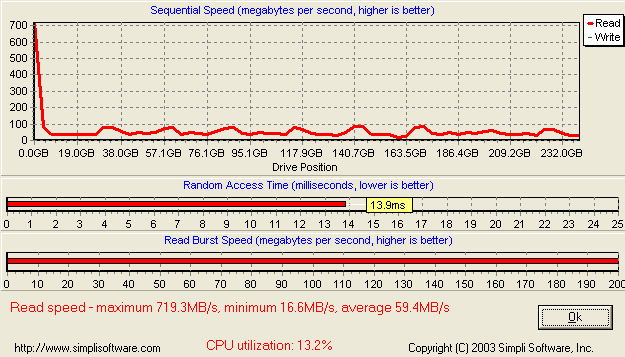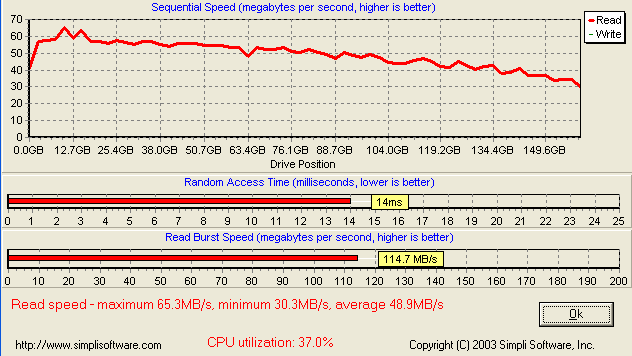MP3, Kribi, Raytracing, HDTach
Next we measured the time taken by each setup to crunch 607MB of U2's WAV files (CD audio) into 192kb/s MP3 format.
The Pentium 4's lead here is CPU-specific. It would achieve the same time on almost any P4 chipset. The test is favoured towards high clock speeds with less reliance on memory bandwidth or latency. That helps explain why the MESH Matrix 64 3200+ E-JOY (don't you just love long, weird names ?) is faster than the Evesham. Nothing to get worried about, really.

Realstorm's Raytracing benchmark shows a marked preference for the AMD CPUs. As both review systems carry the same processor, albeit run faster in the MESH, the results shouldn't come as a surprise.

KribiBench is an easy-to-use benchmark from Adept Development. It's a software (read subsystem) renderer that's capable of rendering amazingly complex scenes. The benchmark can be downloaded from here and features models with 16.7 billion polygons. The test is the rather easier JetShadow model with the realistic setting. There's little to explain how and why the MESH system is a touch slower here. The results were repeatable and consistent. What we're trying to show is that performance can be a very subjective measurement. Add in 10 benchmarks efficiently optimised for the Pentium 4 and you'll wonder why the Athlon 64 3200+ ever saw the light of day. The reverse is true, too.
We had a brief look at how HDTach 2.70 saw the performance of the review PCs' disk subsystems. We were especially interested in CPU usage. The VIA K8T800 chipset isn't known for producing low utilisation numbers.

A strange but consistent result for the MESH. We can infer that the true STR speed hovers above 50MB/s. The CPU utilisation's pretty good from the Promise controller. Wouldn't it be nice if burst speed really was almost 1GB/s ?.

A more conventional graph here, save to say that VIA's VT8237 produces another poor usage showing, and it's only running a single 160GB drive, too.









